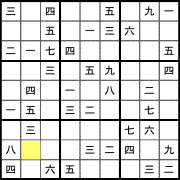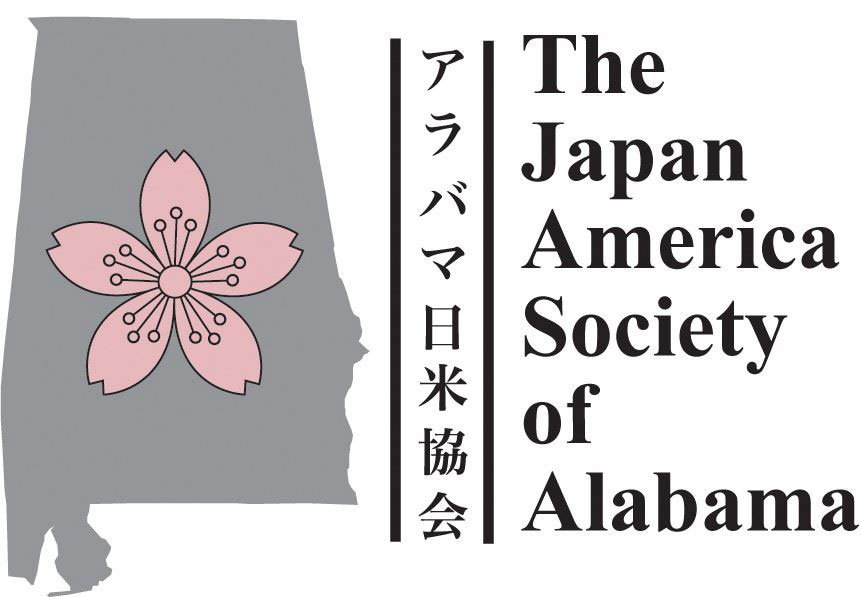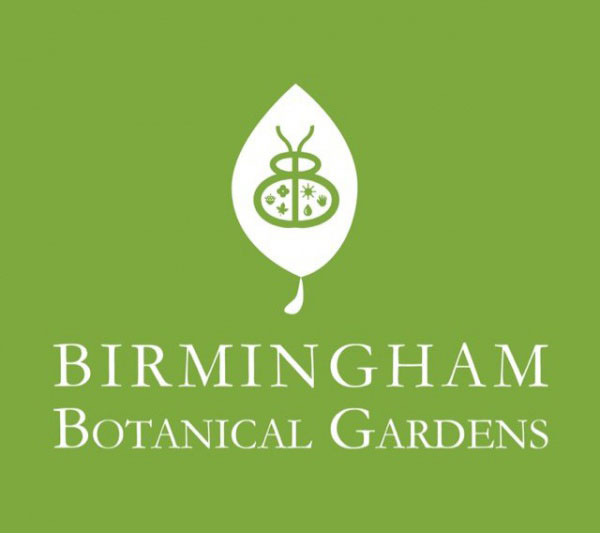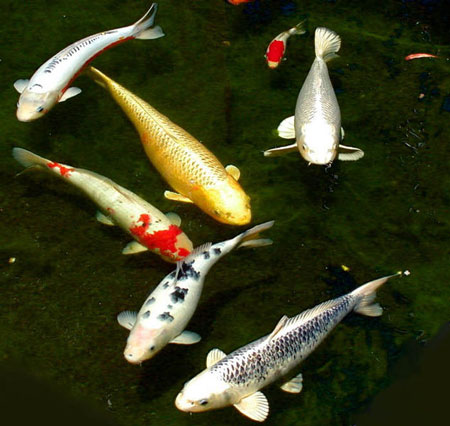A Word of Caution: Some of the websites below are commercial and/or have links to other sites that will try to get you to part with your money. Be wary of their excellent pitches. They can turn a "free" website into something that ends up being pretty expensive. The department does not endorse any commercial products.
-
Videos
- Erin's Challenge opens a new website: This site, created by the Japan Foundation, is for high school students, so all the videos relate to high school life. That might be a bit annoying for university students, but the look inside Japanese high school life is more interesting than annoying. The videos alone are worth a look, but the materials that supplement the videos are amazing.
- Irasshai opens a new website: A video series for high school, created in the late 1990s by Georgia Public Broadcasting. It is a distance learning Japanese course that the Georgia Virtual School still uses. Taught by Tim Cook, an emmy-award winning instructor.
- NihongoCast opens a new website: These videos were part of a defunct online Japanese course at UAB. Unlike Erin's Challenge and Irasshai, which had production budgets into the millions of dollars, NihongoCast had a budget of approximately zero. In particular, the audio is often annoying. Also taught by Tim Cook.
-
Hiragana and Katakana
- Interactive Hiragana Table
- The 46 Basic Hiragana opens a new website: By hovering over the hiragana characters in this chart, you can see the correct stroke order for writing them. If you click on them, you can hear them pronounced, along with some words that have that hiragana in them.
- Dakuon and Handakuon opens a new website: This chart is of all the hiragana that change pronunciation when you put two dots (dakuon) or a little circle (handakuon) next to them. Click on them to hear them pronounced.
- Yōon opens a new website: This chart is all the hiragana that change pronunciation when you add a small "ya" (や), "yu" (ゆ), or "yo" (よ) next to them. These are called "yōon" (ようおん) in Japanese. For example, "ki" (き) and a small "ya" (や) make "kya" (きゃ).
- KanaTeacher opens a new website: This site has all the hiragana off to the side, so if you’re stumped, you can easily look there, but the point is that you’re not supposed to. It also has katakana. Click “all” under hiragana in order to practice the hiragana with dots and circles and small ゃゅょcombinations. You may want to uncheck the second “ja ju jo” line because any words you may have to read with those spellings (e.g., janai) are written with the first row of “ja ju jo” (e.g., じゃない). This will make sense when you see the website.
- Hiragana Practice opens a new website: You drag the hiragana to their roomaji equivalent. If you’re right, they’ll stick there; if you’re wrong, they won’t. Start with the ones you know. There’s a timer with it so you can compare yourself from one time to the next. Source: California State University-Sacramento.
- Katakana Practice opens a new website: You drag the katakana to their roomaji equivalent. If you’re right, they’ll stick there; if you’re wrong, they won’t. Start with the ones you know. There’s a timer with it so you can compare yourself from one time to the next. Source: California State University-Sacramento.
- Hiragana Quiz opens a new website: This is a universal flash Japanese kana quiz tool. It can be used to test your knowledge of hiragana and katakana. It starts in hiragana to romaji mode, which can be changed by selecting "options" and clicking on the text "hiragana" or "romaji". if you click on the wrong answer, it won’t let you continue until you click on the right answer.
- Comparison between Hiragana and Katakana opens a new website: Some katakana look like the corresponding hiragana, but many of them are different. Hiragana often have round curves, and katakana often have straight lines.
- Hiragana Chart opens a new website: A chart with the perfect way to write handwritten hiragana, along with the correct stroke order. This site presents the print form of hiragana, which is sometimes different than the handwritten form. The handwritten forms to be careful with are き and さ (in print form here because this is a computer). This is intended for Japanese children (thus, the images from Thomas the Tank Engine), but all beginners start from the same place.
- Katakana Chart opens a new website: A chart with the perfect way to write handwritten katakana, along with the correct stroke order. This site presents the print form of hiragana, which is sometimes different than the handwritten form. The handwritten forms to be careful with are き and さ (in print form here because this is a computer). This is intended for Japanese children (thus, the images from Thomas the Tank Engine), but all beginners start from the same place.
- Interactive Hiragana Table
-
Kanji
Chinese Etymology opens a new website: By "etymology", the author of this site means the origins of kanji, which of course are in China. Sometimes knowing the origin of a kanji makes it easier to remember, but other times, just makes it even more confusing than it already is. The first known kanji (called "hanzi" in Chinese, meaning "Han letters") were carved onto bone and turtle shells in the second millenium BCE and had something to do with divination. Their meanings, along with their connection to modern kanji, are sometimes easy to figure out (e.g., 田 meaning "rice paddy," derived from an image of a rice paddy from above), but sometimes the connection between the picture and the meaning is very obscure, or in many cases, totally lost to history. In other cases, the picture origin of a kanji was entirely unrelated to the meaning of the kanji, but the word for that picture sounded similar to the word that the kanji represented. It's enough to make Japanese shake their heads in despair, so you would be forgiven if you find yourself not getting as much from kanji origins as you thought you might. If you want to try using this site, enter a kanji in the box next to the "Etymology" button on the left side of the page, then click the button. The kanji origin will be explained in the box to the right, often in cryptic technical terms.
Kanji Sudoku: You've probably heard of sudoku by now. They're these addictive number puzzles that ordinarily use roman numerals, but there's no reason why they can't use numbers in kanji to satisfy your addiction while practicing kanji at the same time. Here is an example of a sudoku puzzle in kanji:

The object is to fill in the blanks with numbers, 一 to 九, such that each numbers appears only once in each row, each column, and each 9-box sub-square. For example, in the puzzle above, look at the empty yellow box in the lower left. You'll see that you could not write 一 there because that kanji already appears in the same column. Couldn't write 二 because it's in the same row. 三 is in the same row, same column, and same sub-square, so that's out. 四: same column and row. 五: same column. 六: same sub-square. 七: hmm, this one's a possibility. 八: same row and sub-square. 九: same row. So that just leave one number it could possibly be: 七. The more you find like that, the more you can find others until you finish filling in the whole thing.
You can find other kanji sodoku puzzles through online searches. There are also some print books.
-
Reading Japanese on a Computer
Rikaichan opens a new website: a browser add-on that makes it so easy to read Japanese, it almost feels like cheating. In fact, that's one of its drawbacks. It's so easy to look up words that it makes it easy to forget what you looked up. You just hover over a Japanese word on a webpage and the definition instantly appears. With Rikaichan, you can plow into Japanese websites with abandon and learn as many new words as you have the stamina to learn. And it's entirely free. They do have a donate button in case you're so inclined.
Rikaichan works in several browsers, but not in Internet Explorer. It is designed to run in Firefox, Thunderbird, and Seamonkey. There are no instructions on the Rikaichan website, but you have to download and install both the add-on itself and the Japanese-English dictionary (or Japanese and any other language dictionary you want). It's recommended that you also install the Japanese Names file because otherwise the program won't tell you what Japanese names are.
About the name: Rikai means "understanding" and chan is a diminutive form of the title san, used for children or people you find endearing. So you could clumsily translate it as "Mr. Understanding."
-
Typing Japanese
Typing Japanese is basically typing roomaji. You just have to make your computer understand that that's what you're doing. CosCom provides software opens a new website that will allow you to type in Japanese without having a Japanese keyboard. If you have the ability to install programs on your computer, find the programs here:
-
Japanese Dictionary Apps
For a long time, Japanese electronic dictionaries were the must-have item for serious students of Japanese, but nowadays, most of those functions can be found on a phone app for free or cheap — assuming you have a smartphone. A dictionary app should translate words from English to Japanese and the other way around, but also give you example sentences so that you can see the word in context. Here are some reviews for both Android and iPhone apps.
Android
- JED - Japanese Dictionary: Free app. According the Ishikawa JET Blog opens a new website, it's the most popular dictionary app for Android, but it's not optimized for newer phones. You can find other well-reviewed dictionaries in the Google store.
iPhone
- Imiwa? opens a new website: Free app. Cool feature: If you press down on a word or sentence, it will play it for you. It does not have a real human voice, but the pronunciation is pretty close.
- Midori opens a new website: Paid app ($9.99). Cool feature: If you come across a kanji you don't know, you can write it on your phone and it will tell you what it is. However, you have to know the correct stroke order. The more you become familiar with kanji, the more you can figure out the stroke order even of kanji you don't know.
-
Birmingham-area Resources

Japan-America Society of Alabama (JASA)
A private, not-for-profit association working toward encouraging and developing friendship and understanding between individuals within the communities of Japan and the United States.
JASA Website Opens an external link.
Consulate-General of Japan in Atlanta
Information on visas (not needed for US citizens visiting 90 days or less), the JET Program, and Japan in the southeastern US. Also a source for news about Japan and cultural events held in the US.
Consulate WebsiteOpens an external link.

The Japanese Gardens at the Birmingham Botanical Gardens (BBG)
This 7.5-acre site is actually an interwoven collection of gardens built in the Japanese style, replete with traditional architectural and garden elements. Here you can find the tea garden, the karesansui garden, the hill and stream garden, and the small stroll garden set around Long Life Lake. Casual visitors will want to study the colorful koi, relax in the lakeside rest shelter, peruse the bonsai house, or take a class at the pavilion. Plant lovers will enjoy exploring bamboo groves, examining our growing collection of momiji — the Japanese maples — and seeing prehistoric dawn redwoods and ginkgos.
BBG Website Opens an external link.
Birmingham Sister Cities (BSC)
Birmingham Sister Cities is part of a network that unites tens of thousands of citizen diplomats and volunteers in nearly 500 member communities with over 2,000 partnerships in more than 140 countries throughout the world. We have official relations with the Japanese cities of Hitachi and Maebashi.
-
Other Useful Links
Useful websites for studying Genki
- Grammar Video for Genki opens a new website
- Stanford Japanese learning resource website opens a new website
- DuoLingo : Japanese vocabulary
- Kana Bimoji opens a new website
 — A Little Culture
— A Little Culture
 Koi is the Japanese word for “carp,” but in English has come to signify the ornamental domesticated varieties often found in Japanese gardens. Because of their ability to swim against strong currents, Japanese associate koi with strength. Flying paper or cloth koi attached to a pole are used as a symbol of Children’s Day, May 5, originally known as Boy’s Day in Japan. Image courtesy of Stan Shebs via Wikimedia Commons.
Koi is the Japanese word for “carp,” but in English has come to signify the ornamental domesticated varieties often found in Japanese gardens. Because of their ability to swim against strong currents, Japanese associate koi with strength. Flying paper or cloth koi attached to a pole are used as a symbol of Children’s Day, May 5, originally known as Boy’s Day in Japan. Image courtesy of Stan Shebs via Wikimedia Commons.